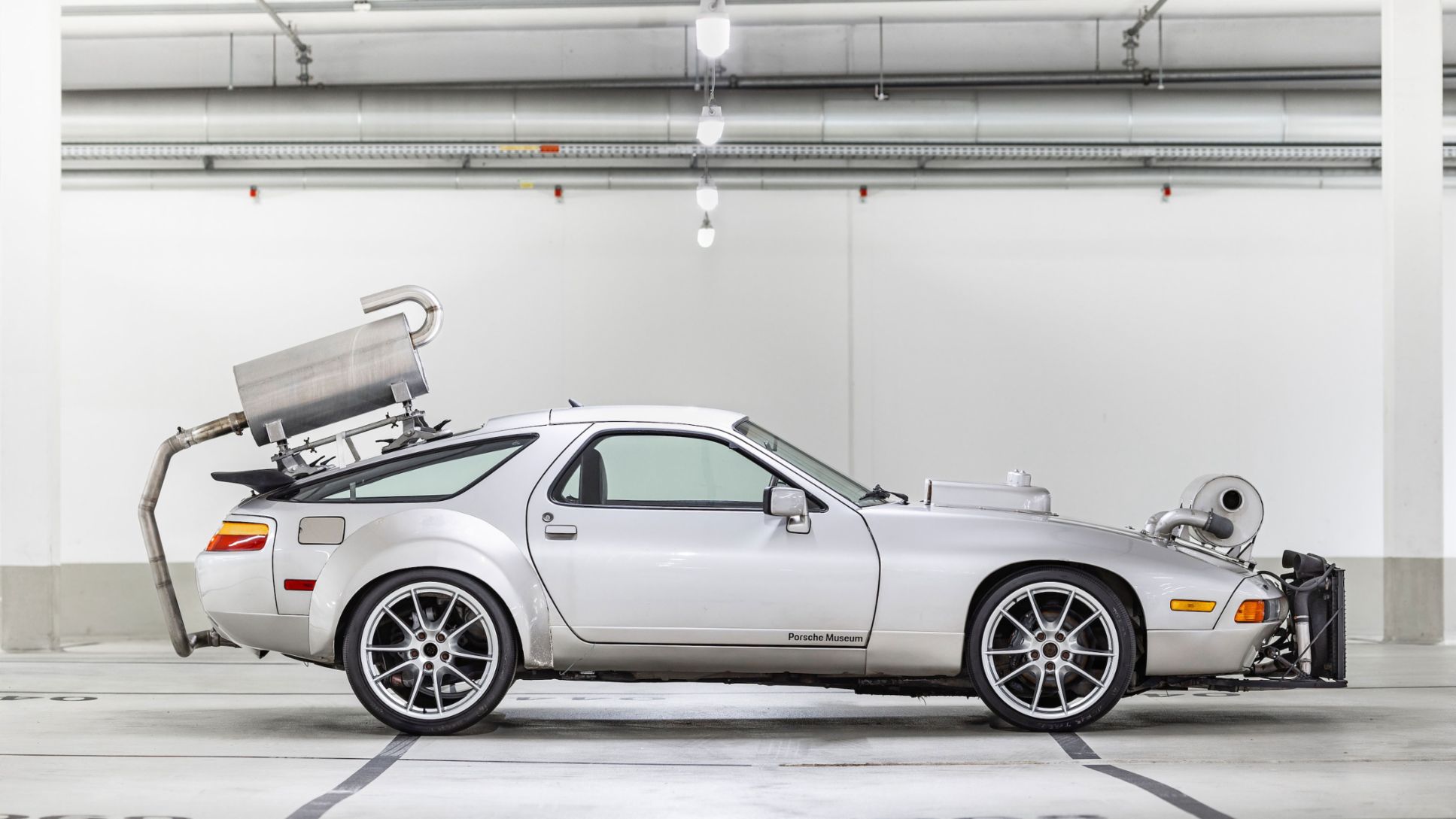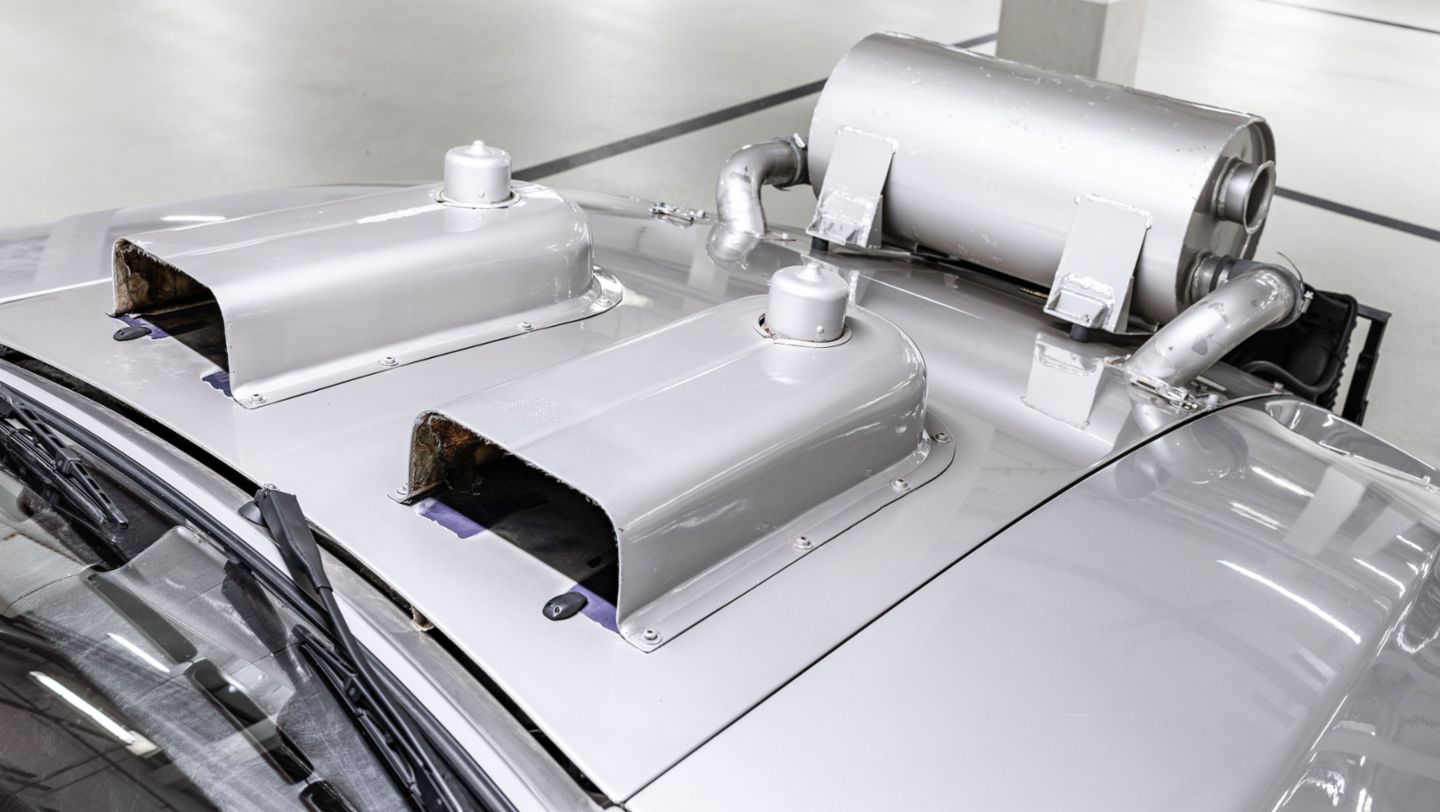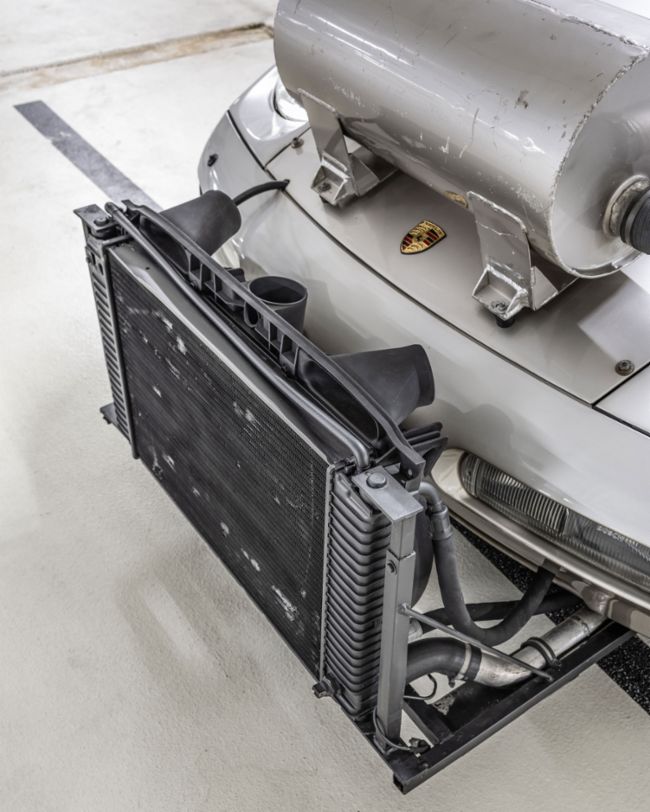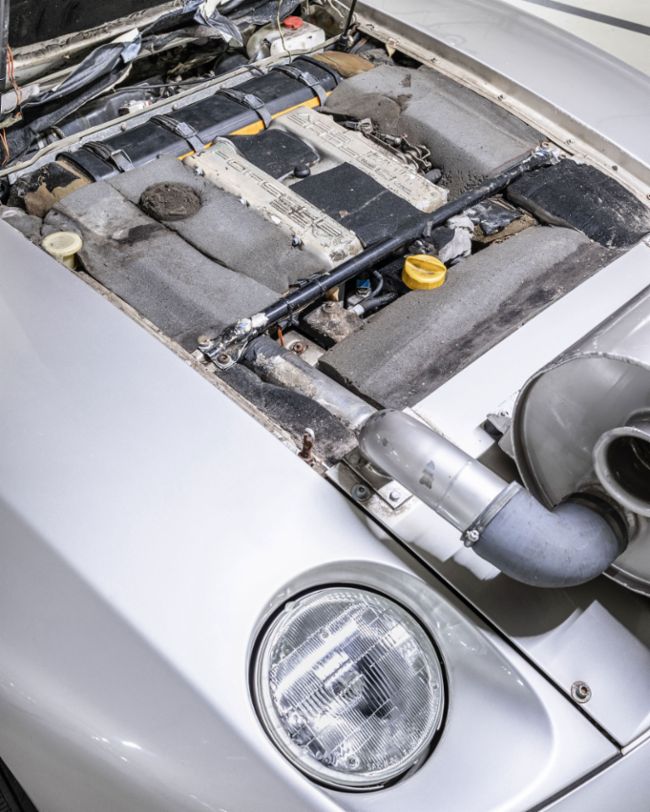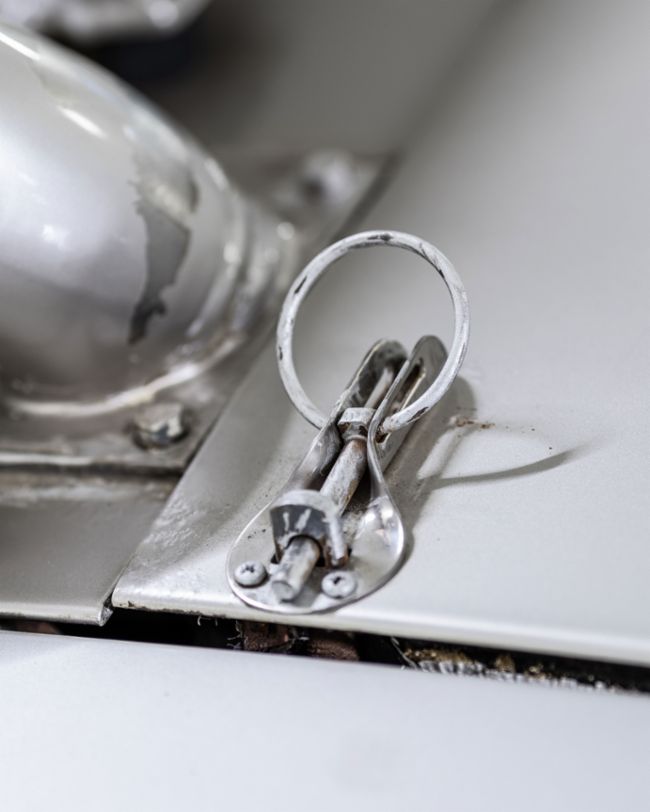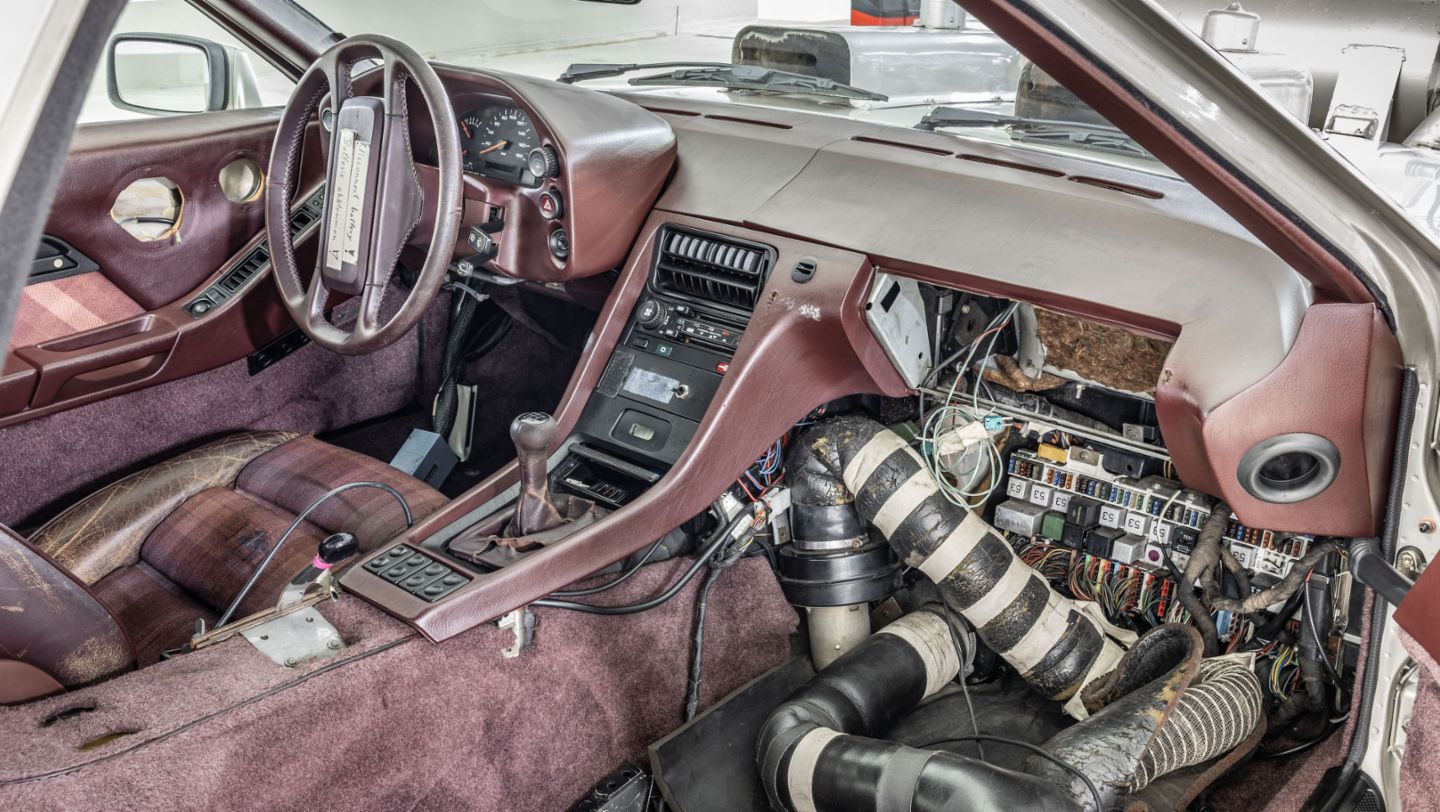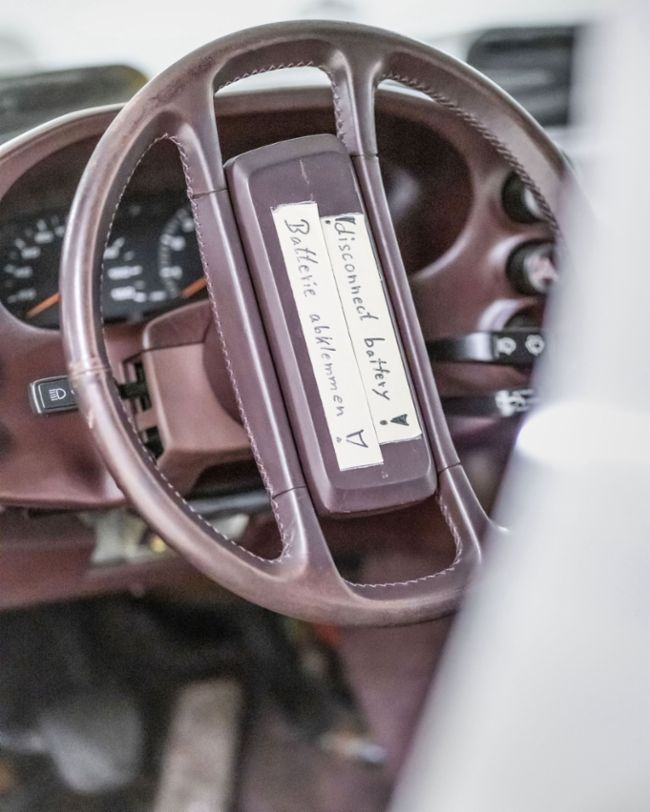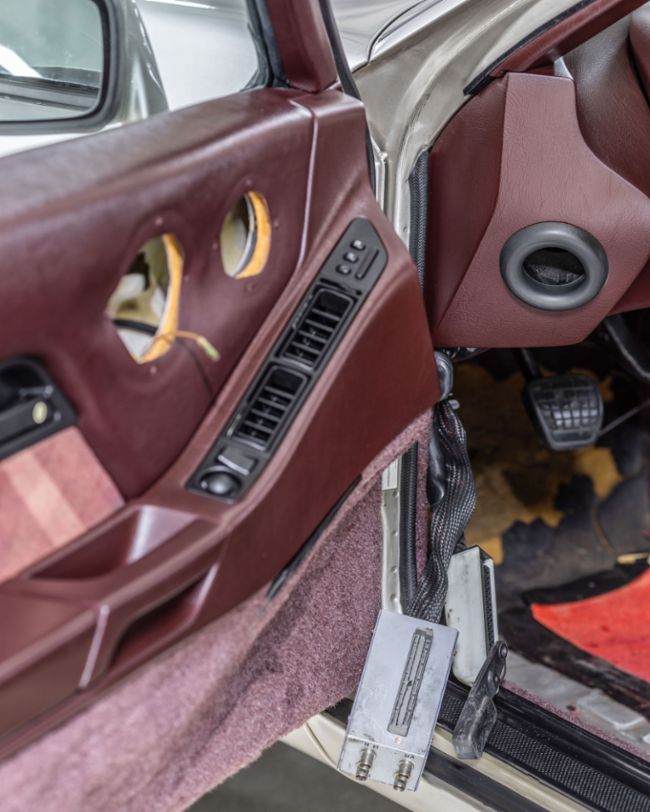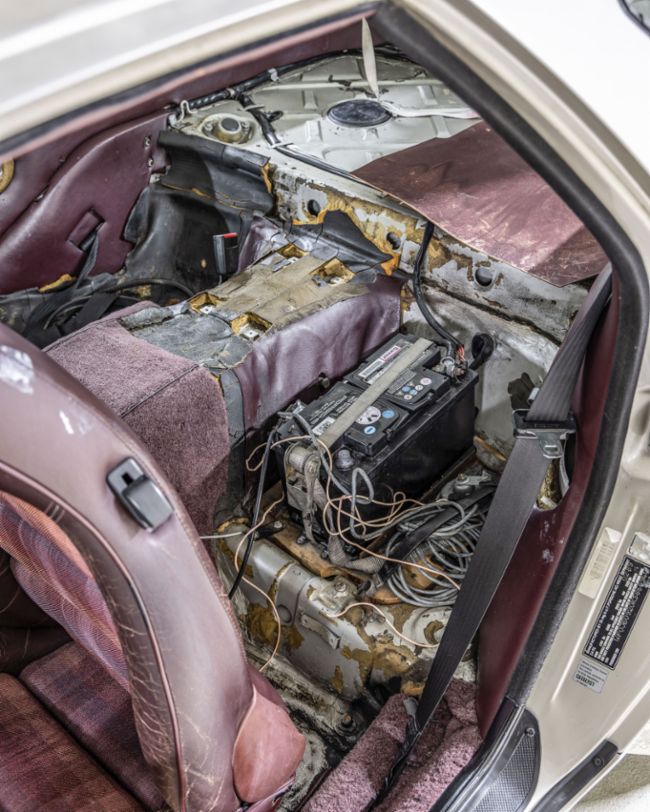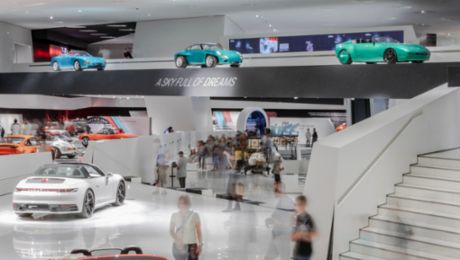In the end, it just stood around more and more often, but the team in Weissach didn’t really want to let it go. It felt like it had always been there. And there is probably no employee at the test and development centre who has not come across this silver 928, with its many add-on parts, a car as peculiar as it is unique.
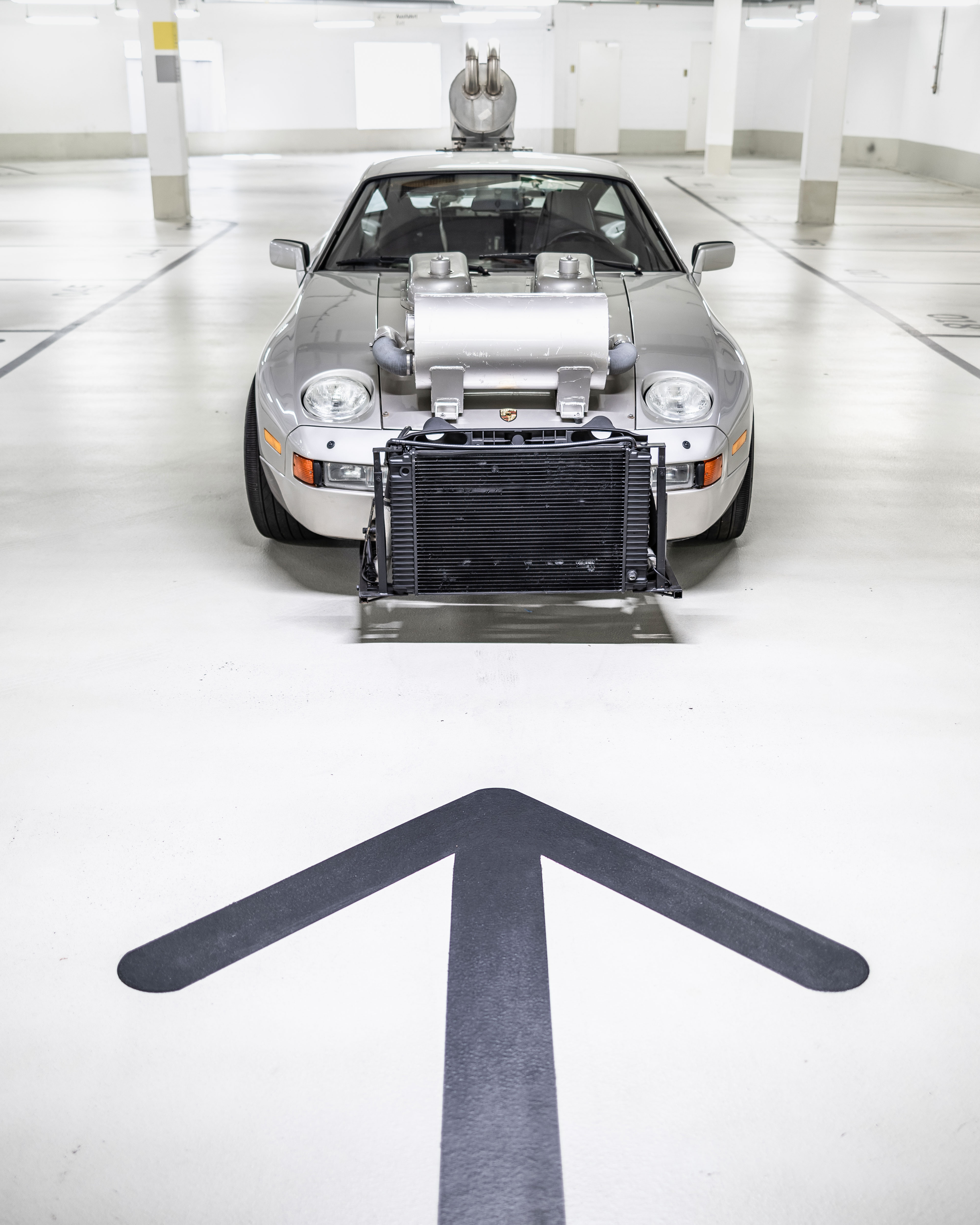
For more than 30 years, it helped to make cars quieter. Today it is on show in the Porsche Museum and, for those unacquainted with its history, its bizarre appearance begs the question: what is it?
“It’s a real dinosaur,” says Harald Mann, referring to its long testing career, one that is probably unique for a test car at Weissach. “And it could still do the job today,” he reckons. Its many missions were all about ‘noise law compliance’, capturing things like ‘external noise-relevant parameters during a drive-by’ to fulfil legal noise emission requirements. The fact that it was a 928 that was chosen back in the day (and remained one for so long) might seem coincidental. Yet it was anything but.
“Whether the engine was in the front or the rear, or how much interior space was available was irrelevant. Primarily, the testing required a lot of power in the lower engine speed range. Using the 924 was therefore a non-starter, and a 944 with its typical gearbox rattle at low loads was also out of the question,” says Mann. “And an air-cooled 911 was too loud. “It was important to minimise the noise of the vehicle as much as possible.”
Mann, a trained mechanic, has worked at Porsche for 40 years, more than 30 of them on test benches in Weissach, with most of his time dedicated to vehicle acoustics. For him, it’s a complex but exciting field in which the question of how loud a vehicle may be in accordance with legal requirements has always been a major focal point.
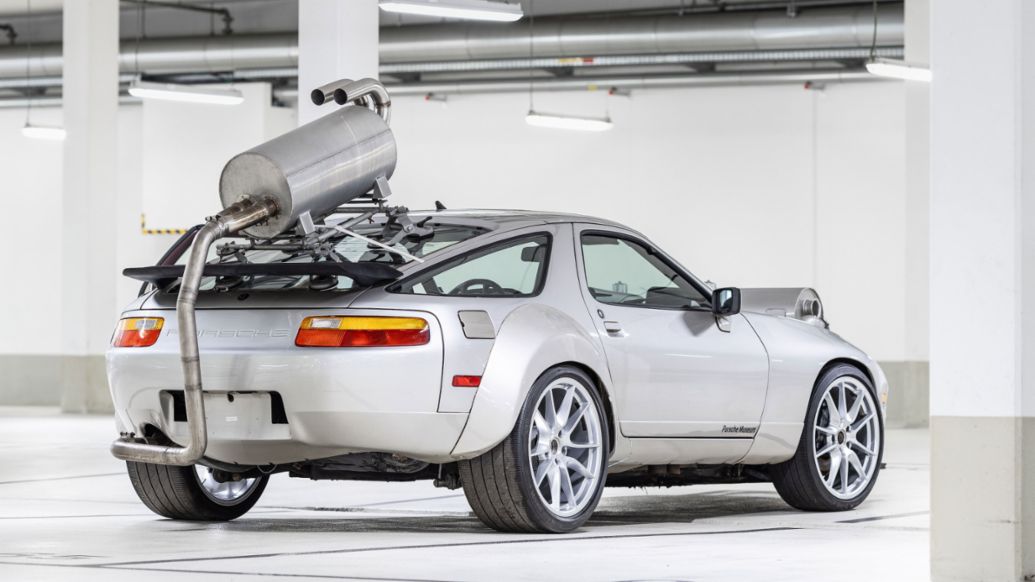
The component sound sources, the mechanical noise of the engine and gearbox, the rolling noise of the tyres, intake and exhaust noise add up to an overall noise level that must not exceed a certain value, he explains. At the end of the 1980s, the limit value for an ‘accelerated drive-by’ at 50 km/h was 75 dB (A). “In future, it will only be 68 dB (A).” This is a major hurdle for sports cars in particular, not least because they need wide tyres designed for high speeds. Such tyres, he notes, are never quiet.
Probably the quietest 928 in the world
“The mechanical noise of the engine and the tyres is, in fact, hard to influence,” says Mann. “In the end, it is always a mixed calculation: if the engine and gearbox are particularly quiet, the exhaust can be a little louder, for example. If the tyres are excessively loud, then the intake noise might need to be quieter.” Because the manual transaxle sports car with its wine-red multicolour interior, which was put into service in 1989, was exclusively intended for determining the noise level of different tyres, it became probably the quietest 928 in the world.
In order to isolate and minimise the noise sources of the engine and powertrain as well as the intake noise and exhaust, they literally wrapped the 928 in cotton wool. Engineers mounted the radiator in front of the bumper, the roaring fan was eliminated from the outset and the intake process was put in a large barrel – or in engineering parlance: an intake silencer with the best possible insulation. From here, cables led to the powertrain in the engine compartment, which was completely encapsulated down to the last millimetre. To provide cooling to the 32-valve V8, two fans housed in scoops on the bonnet could be switched on at the touch of a button to draw hot air outwards as required.
The completely unchanged radiator – including the standard frame and the weld seams on the header tank – clearly wasn’t devised with a beauty contest in mind. Rather, the conversion was a pragmatic one; form had to follow function. A similar procedure was followed in the rear. The exhaust system essentially consisted of an oversized rear silencer strapped to the rear windscreen, from which two hand-welded exhaust pipes pointed towards the rear. Not visible in the photos: the completely encapsulated transaxle shaft and the underbody insulated around the gearbox.
Insulation for transaxle shaft and gearbox
The manual 928 was ideal for the purpose, says Mann. “Torque and power are important. This means that the car drives past the measuring points at a lower engine speed level, which reduces the noise.” In the test, the 928 was accelerated to 50 km/h in accordance with the specifications in order to drive past two microphones over a measuring distance of 20 metres at a speed of at least 61 km/h. For vehicles with a five-speed manual gearbox, the measured values obtained in second and third gear were averaged. “The fact that the 928 gearbox was already quiet by design also played a role, of course. In everyday life, this is important for the passengers’ impression of quality, though here it was all about the noise.”
The skidpad in Weissach initially served as the test track, but its surface changed as a result of continuous testing, he says. In order to rule out variables like this, the test site was equipped with a special, ‘external noise measuring track’ paved with standardised asphalt on which measurements could be taken under conditions that remained constant. With slick tyres, Mann recalls, an extremely low value of 63 dB (A) was achieved. This was at a time when the legal limit was 74 dB (A).
V8 from engine test
Sometimes colleagues from Pirelli would borrow the 928 for their own testing. The somewhat rustic rear wheel arch extensions demonstrate how the car always had to grow with the wheel/tyre combinations that were fitted, while the condition of the currently fitted, low-profile tyres suggests that the wheels are from the relatively recent 991-generation 911. The last accelerated drive-by was probably not that long ago, it seems.
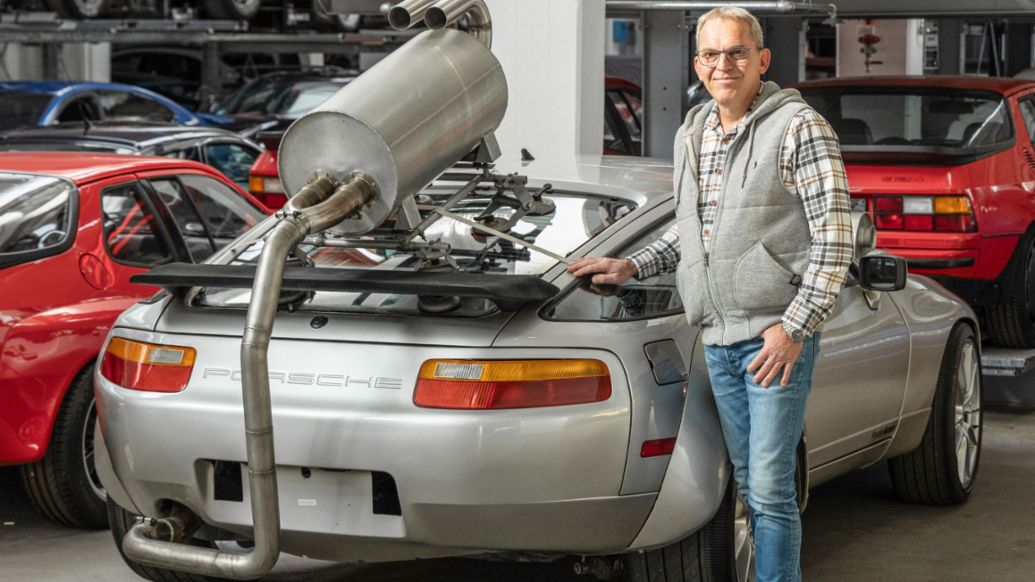
However, another special feature, a fact of technical and historical significance, only recently emerged during a discussion with colleagues in Weissach about the noise test vehicle, says Mann. “The new 928 GTS was already in development at the beginning of the nineties. Two engine concepts were created: a 5.4-litre V8 designed for performance at high revs and one with lots of torque. The nod went to the first variant and the torquier engine was installed in the noise-test car – which was, after all, perfect for the intended use. And the engine was a leftover one anyway.”
This meant that in the lightweight silver 928 with its pared-down interior, a 5.4-litre V8 one-off from engine testing would provide the propulsion. It doesn’t just look special – it is special to its core.
Info
Text first published in the Porsche Fahrer Magazine 2/2024.
Author: Jan-Henrik Muche
Photos: Götz von Sternenfels
Copyright: All images, videos and audio files published in this article are subject to copyright. Reproduction in whole or in part is not permitted without the written consent of Dr. Ing. h.c. F. Porsche AG. Please contact newsroom@porsche.com for further information.
